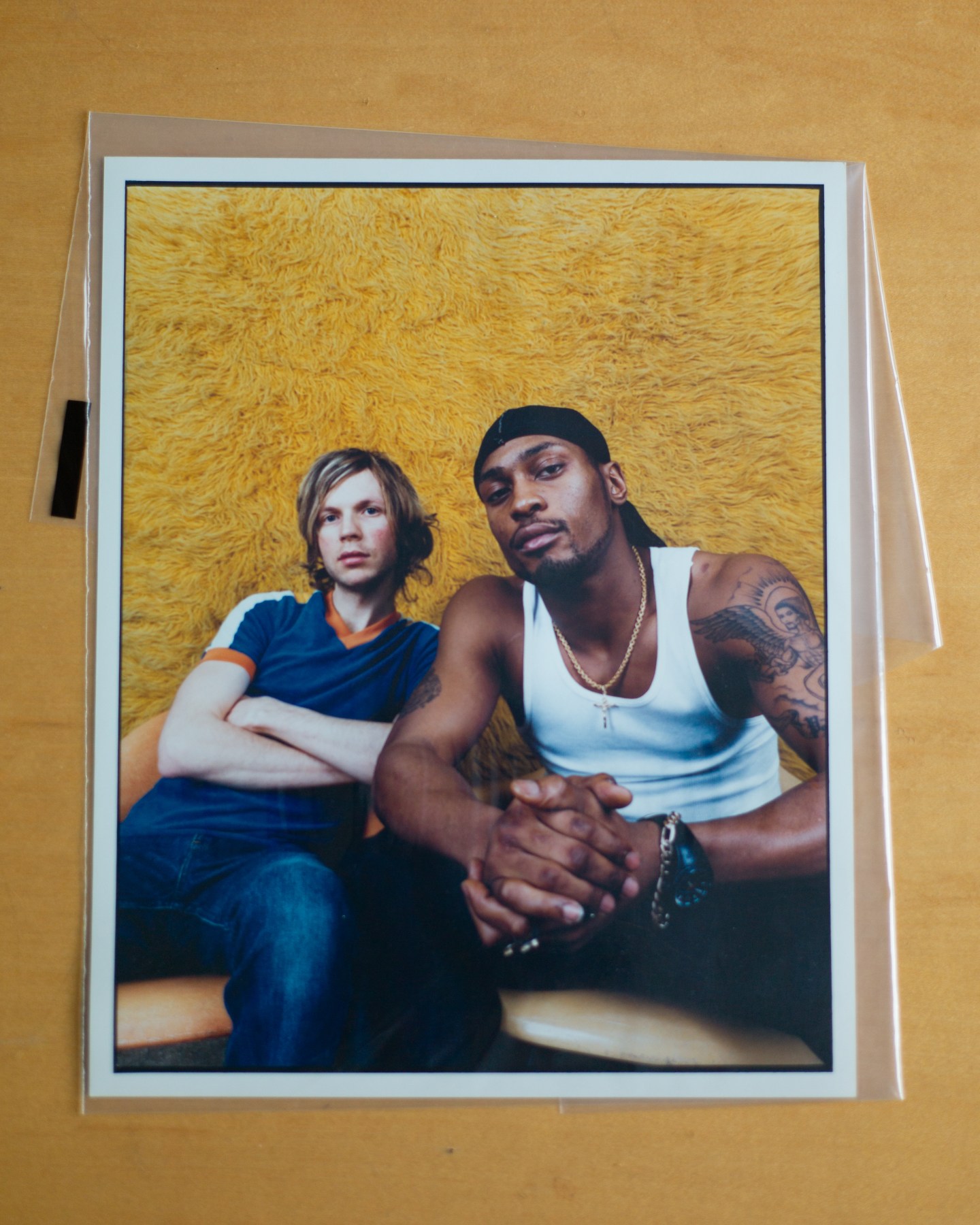On a wintery day in 2000, Beck and D’Angelo arrived at a furniture gallery owned by New York City collector Stuart Parr to shoot the cover of The FADER’s third-ever issue. The shoot didn’t last long, just enough for legendary hip-hop portrait photographer Jonathan Mannion to snap a couple dozen shots of the two rapidly rising stars — D’Angelo had dropped his acclaimed sophomore record Voodoo just weeks prior — meeting each other for the first time, shaking hands.
The cover would later become a turning point for The FADER, solidifying its mission in highlighting ostensibly opposing worlds of music, while capturing a pivotal moment in both of those artists careers — one that’s only grown in significance following the death of the towering soul and R&B star, who passed away on October 14 of pancreatic cancer at age 51. The music world has since entered a state of mourning, remembering a visionary artist with a singular voice.
As for The FADER, we decided to head back into the archives and unearth the outtakes from this shoot, which we’re publishing online for the first time. Read on for stories from Mannion, FADER co-founder Jon Cohen, and former editor-in-chief Eddie Brennan about D’Angelo’s encounter with Beck.
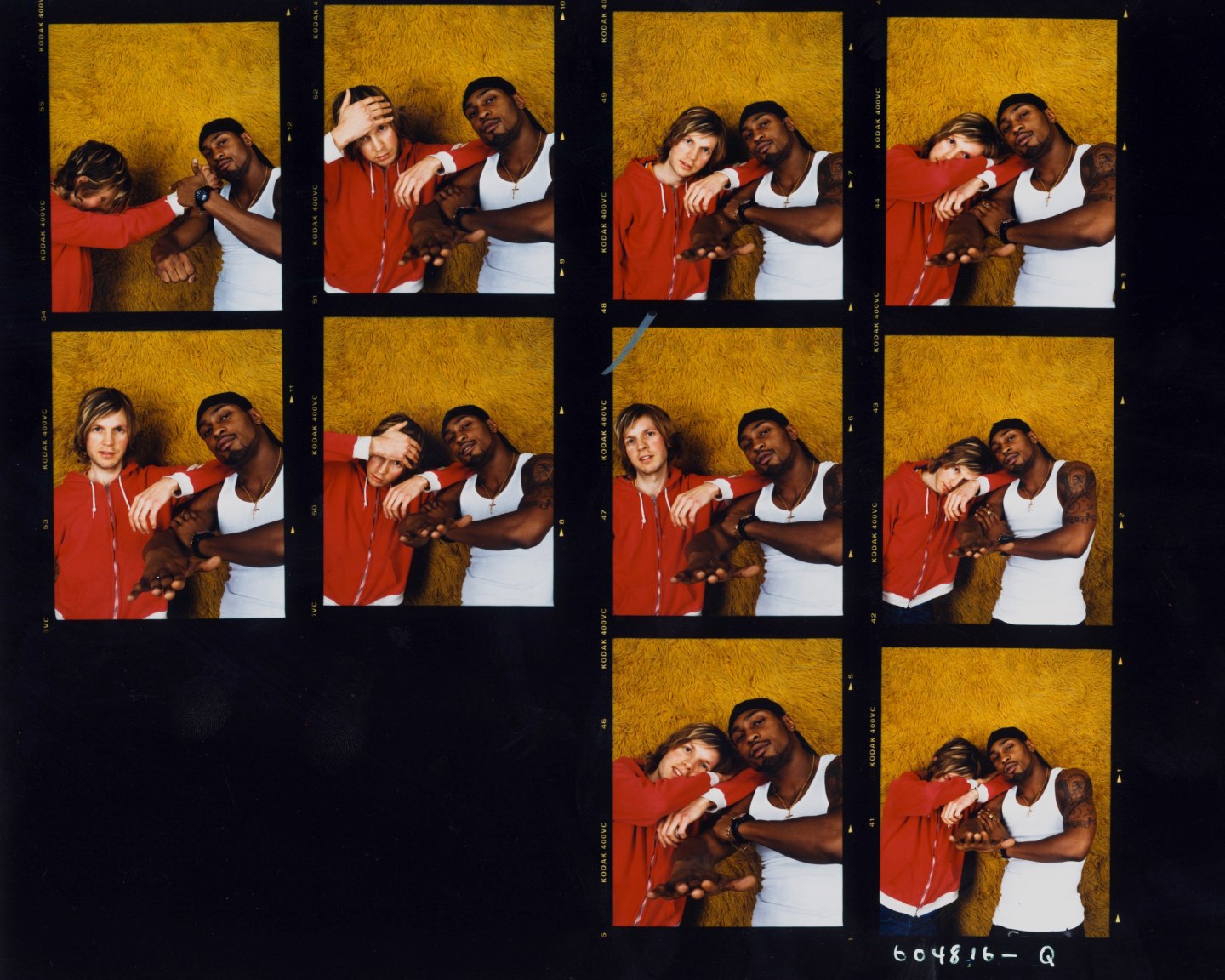
Jonathan Mannion, photographer: I remember being so focused on achieving beautiful photos and trying to understand the dynamic and if these two gentlemen would work in the same environment, and then how to make it a connected world that felt like oil and vinegar in some ways. Like these two together, how does that even work?
I think it’s such a testament, looking back, to D’Angelo’s charm and how disarming he was. He was larger than life, but there’s an unassuming larger-than-life that exists where it just is. You don’t have to pretend like you’re something else to be enormous and to fill the space, and he was that. I remember that simple cross. I remember the simplicity and, again, this is not a man who needs disco balls and crashed Ferraris with seven girls in the background
I knew who D’Angelo was and I was so grateful for that time because I was a fan and remain a fan. But Beck, I didn’t understand, so it was sort of like, “Let me try and figure out Beck first, and then I know what I’m gonna get from D’Angelo.” I wish that I would have gotten even more [of] the dynamic of them together and the way that we responded to the environment. That yellow shag carpet just happened to be in the room and you could see that rug in either of their homes. That rug became a moment of connectivity. I was like, come on, man, let’s just hang it up. And it weighed a ton, and I remember trying to figure out how to get that thing on the wall. The shag carpet became everything, maybe a third character, as a moment of like, “Hey, you guys need to know each other.”
[D’Angelo] was larger than life, but there’s an unassuming larger-than-life that exists where it just is. And he was that.
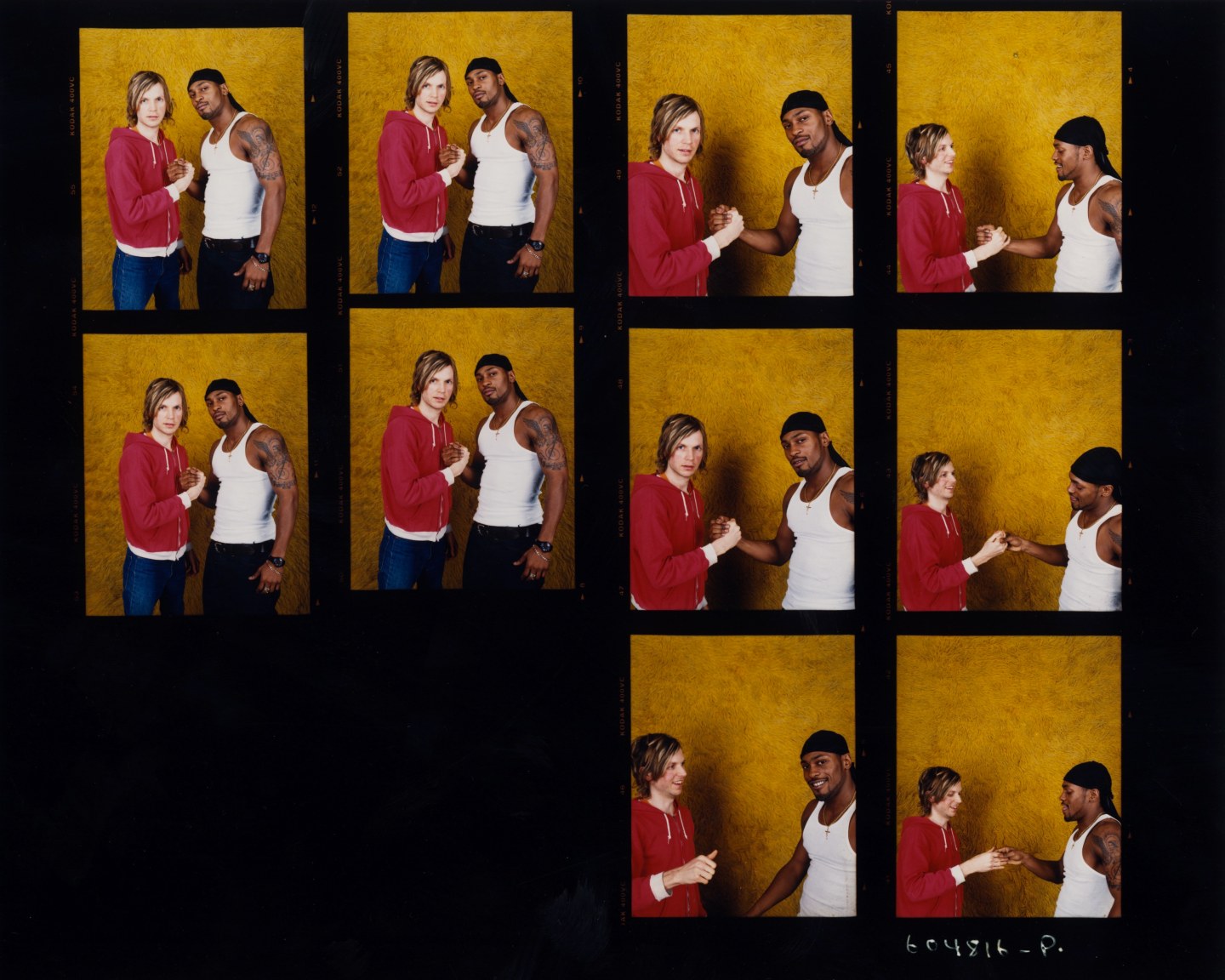
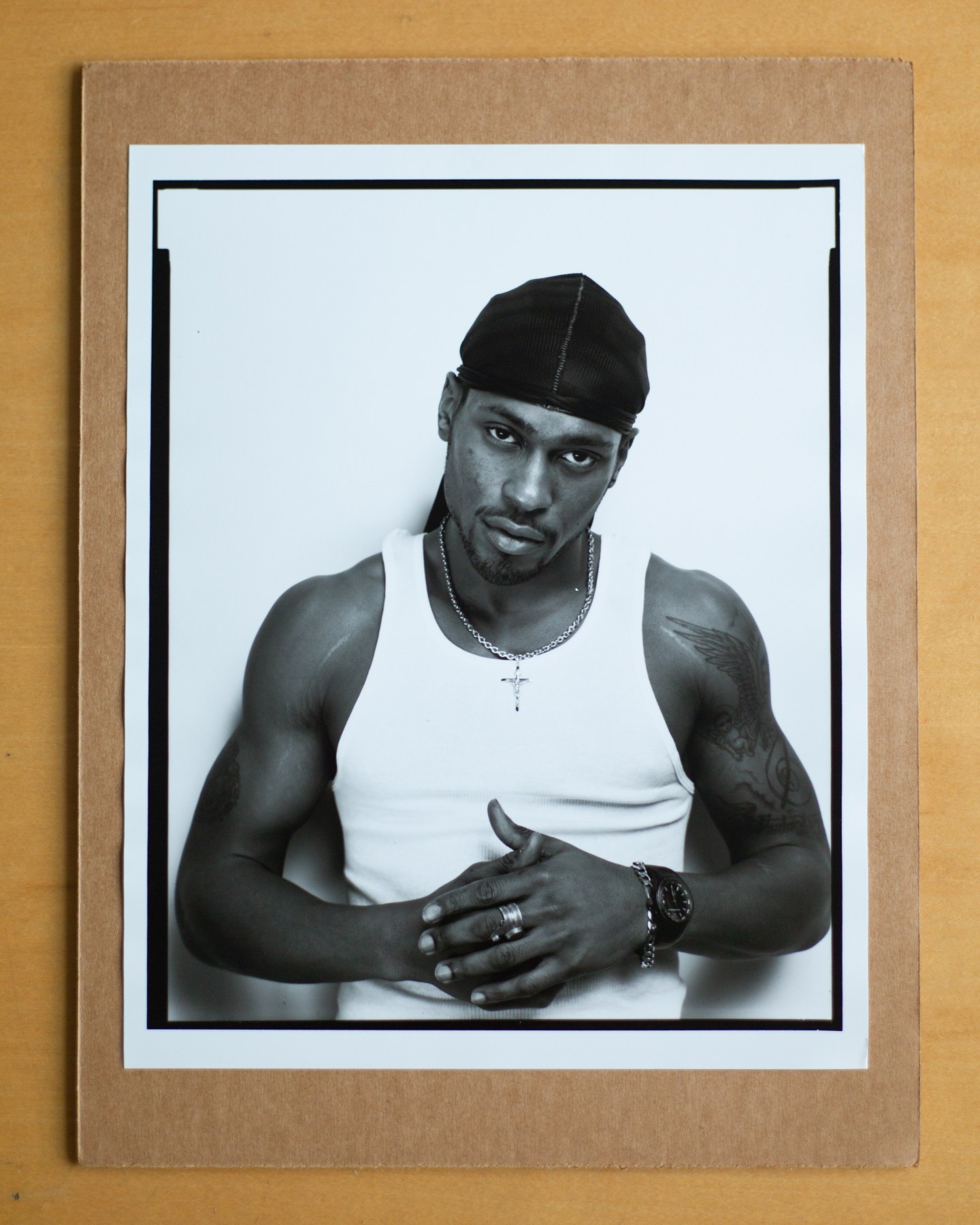
D’Angelo for The FADER issue 03.
Jon Cohen, Co-Founder of The FADER: Someone brought a joint to the shoot and then they dropped it. And [D’Angelo’s] like, “I can’t find my joint. I can’t find my weed. You [Beck] got to smoke before we do this. We got to smoke.” And the whole production, everyone who is there, just started looking around to find this loose joint, and it ended up being in the yellow shag carpet that was on the floor. They smoked, and then they hung that shag carpet for the backdrop of the shoot. So that was the big drama of the shoot.
The way it came together is we were friends with D’Angelo’s manager at the time, Dom. And John Silva managed Beck. They both had a lot of mutual respect for each other. Beck was so inspired by soul music and I think D’Angelo really respected what Beck was doing. And they both committed to the shoot, although they did not know for sure if [Beck] was coming or not. Beck was playing Radio City [Music Hall] the night before that shoot so I went to Radio City, went backstage to reconfirm, and Beck’s like, “Yeah, I will be there.” So it was that uncertain until the last minute. But they got along. I think they ended up having a relationship that kind of lived on after that.
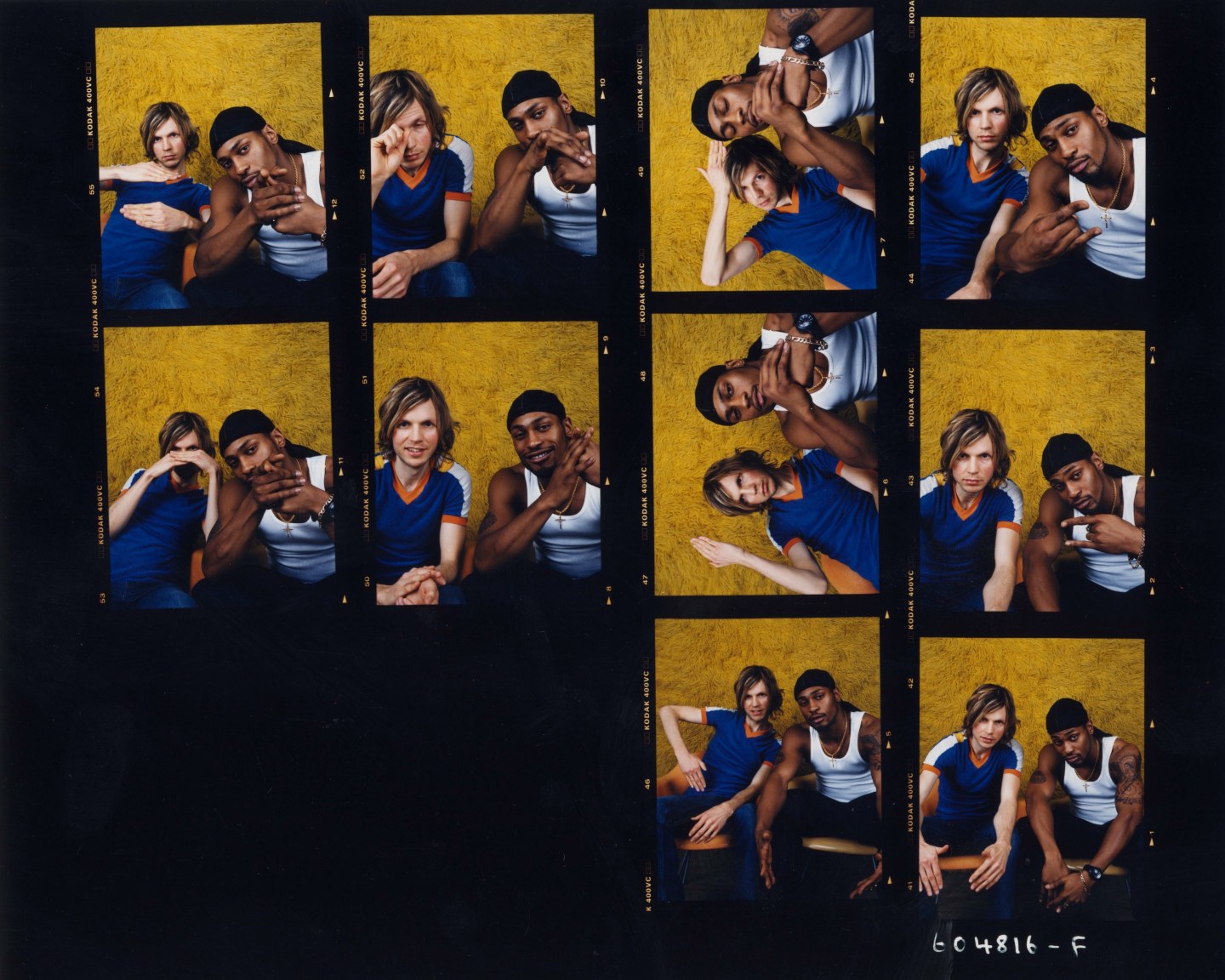
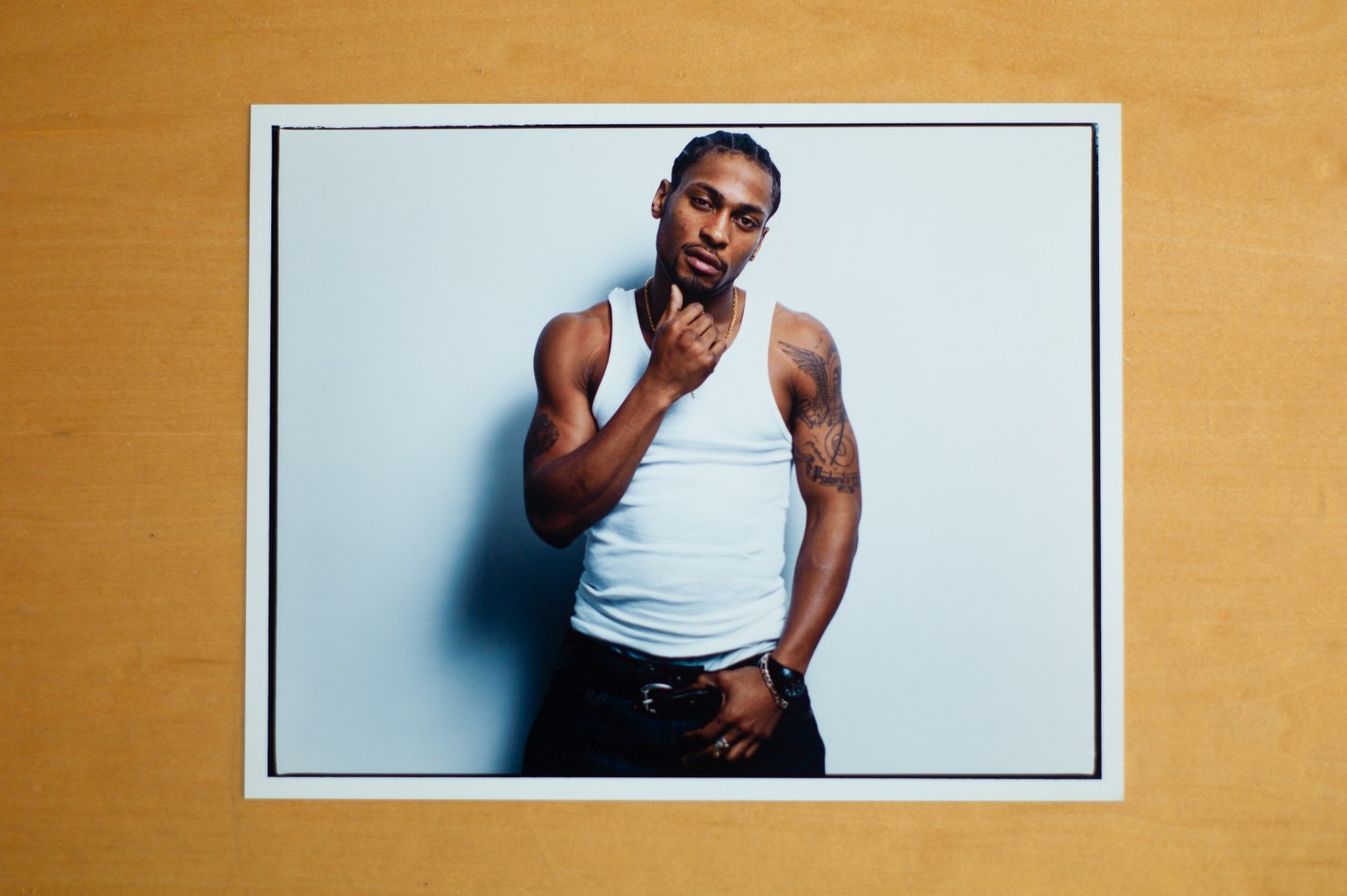
D’Angelo for The FADER issue 03.
Eddie Bannon, former editor-in-chief of The FADER: I think it’s hard for somebody who wasn’t in that generation to understand just how segregated the music magazine business was at that time. There were magazines about quote-unquote “Black music,” and magazines that were quote-unquote about “white music.” I think what was crucial about The FADER magazine itself, and the way [this] cover reflected it, was that it was a dichotomy at the time. We’re gonna celebrate Beck that’s pioneering within alternative rock, and on the other hand D’Angelo pioneered this specific R&B/hip-hop embrace. That’s what the significance of that cover story was.
Both of these guys were doing something great, both of these guys have incredibly strong and unique individual visions. They were outside of the mainstream completely. And the fact that they shared that and understood that they, in fact, had more in common as musicians and creators, it logically makes so much sense.
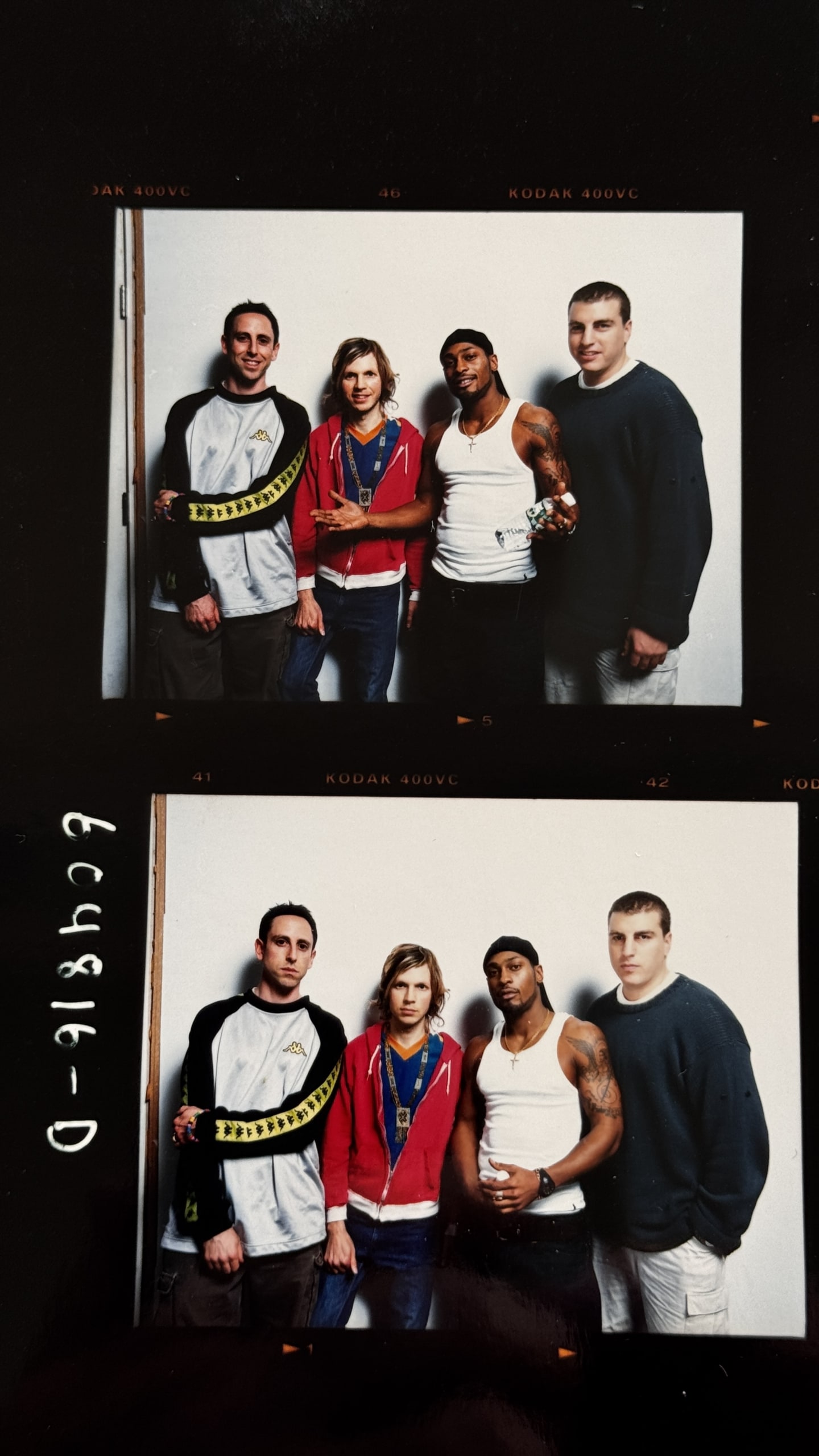
D’Angelo and Beck with The FADER co-founders Jon Cohen and Rob Stone.
Revisit the 2000 D’Angelo and Beck FADER cover story.
Interviews as told to Steffanee Wang




